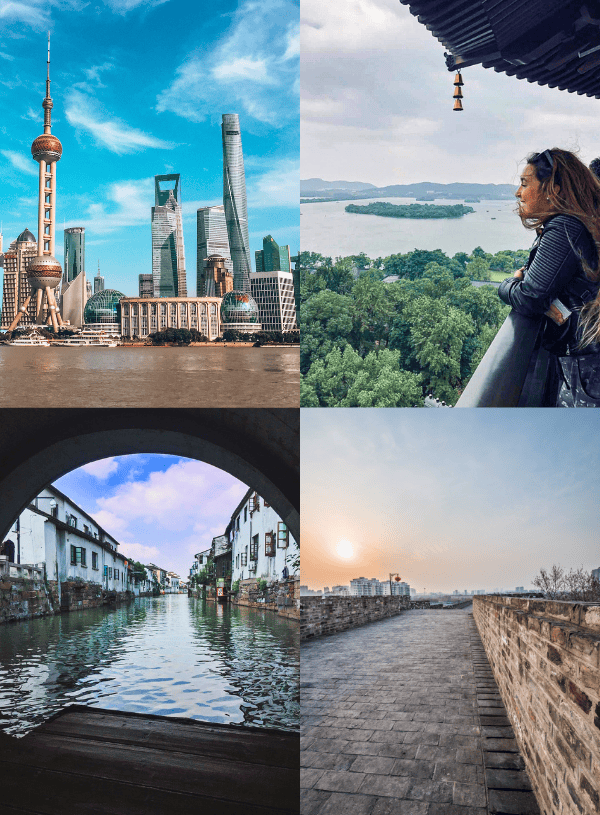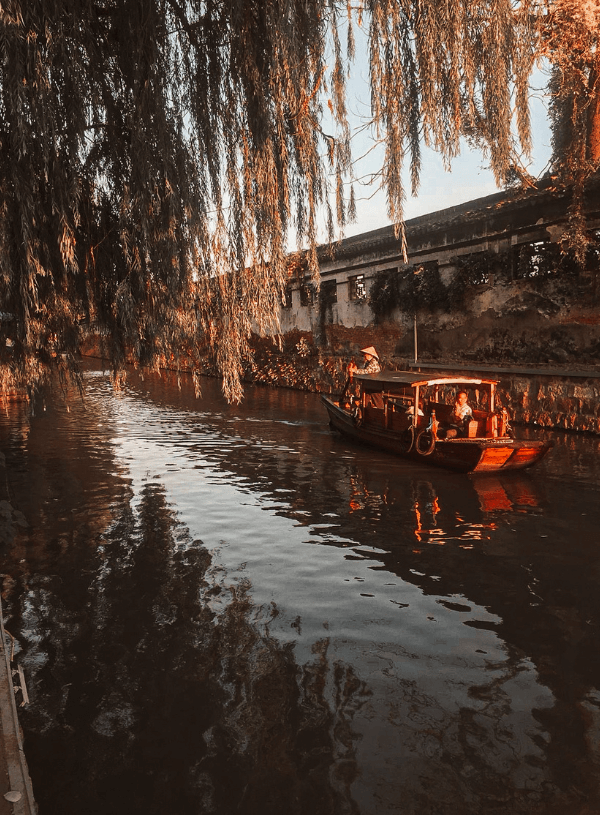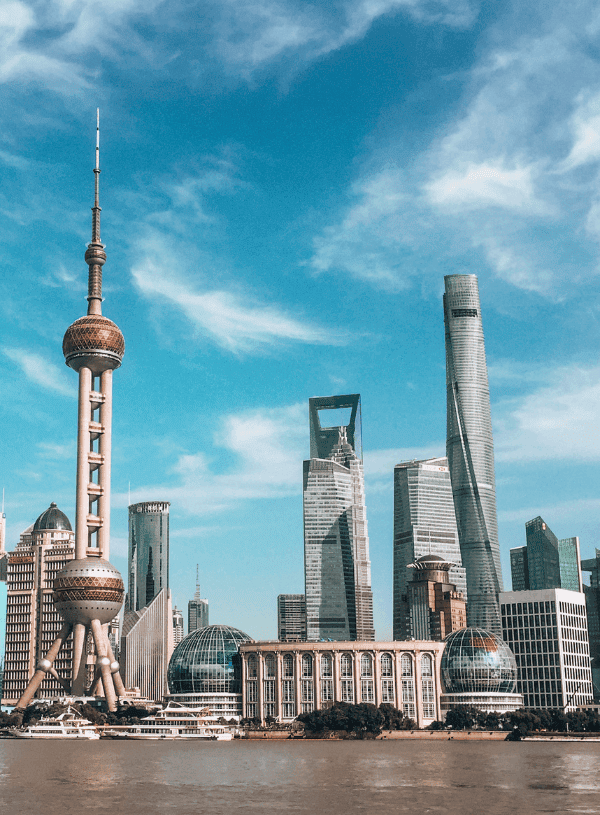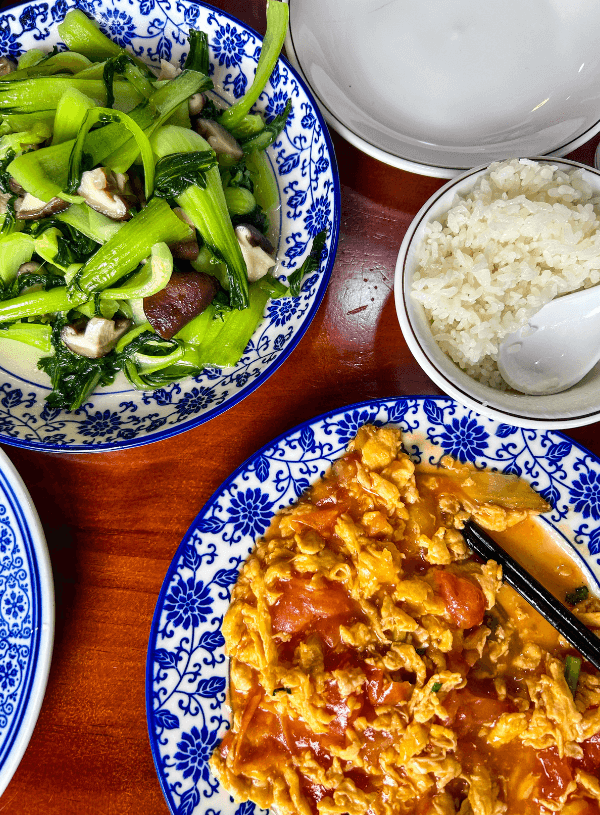Shanghai Travel Guide: Best 10 Places to Visit in 3 Days (2025 Itinerary)
Last Updated on November 28, 2025
Are you visiting Shanghai and looking for the best things to do in town, as well as tips for planning your trip? You’re in the right place!
After living in China for over a year, I can confidently say Shanghai is one of my favorite cities in the country. Yes, it doesn’t hold the same Imperial heritage as Beijing or Xi’an, but its energy is unmatched…
Spending time in Shanghai feels like exploring the future, especially when wandering around the skyscrapers of The Bund. At the same time, ancient Chinese traditions surround you as you explore the older districts and visit smaller, family-run local eateries.
That’s the beauty of Shanghai, and in this Shanghai travel guide, I will share with you the best way to experience it. You’ll find the best 3-day Shanghai itinerary for first-timers, along with helpful tips to plan your trip.
This article may contain affiliate links. This means that if you purchase through one of the links, I may be paid a small commission at no extra cost to you. Thank you for supporting the blog and allowing me to keep sharing meaningful travel experiences with you.
Don’t have time now?📌 Save it for later!

Recommended In This Article
Shanghai Travel Guide: How to Plan Your Trip
1. VISA & Travel Documents
Here are the documents you will need to land in China:
- A valid passport (make sure it’s good for at least six months after your trip).
- Most visitors need a Tourist Visa (L Visa), which allows you to explore China for up to 60 days.
- When you land, airport authorities will require you to show proof of your return flight and accommodation details.
Many countries now qualify for a 30-day visa-free entry till the end of 2026. Check out this website to discover if you benefit from this policy.

If you need the L Visa (or any other type), you can apply at the Chinese embassy or consulate in your country or through an official visa application center. Here, you’ll find the information you need to start your visa application.
The official Chinese visa website has the most up-to-date information, as things can change. My advice is to apply at least two months in advance to be on the safe side.
2. Best Time to Visit Shanghai
Shanghai is definitely one of the most expensive cities in China (if not the most costly). Nothing crazy, but compared to other Chinese cities, starting prices for accommodations, taxis, and other services may be higher.
September is a great month to explore eastern China. You’ll enjoy long, sunny days without the high temperatures that characterize summer. Spring, especially from April to May, is another excellent time to be in Shanghai.

The gardens are in full bloom, the city comes alive after winter, and the evenings are perfect for experiencing Shanghai’s nightlife.
These are definetely the best months, not only for the weather, but also for the prices. They fall into the shoulder season, which is the ideal one to travel to China if you’re looking for fewer crowds and lower prices.
3. How Many Days in Shanghai?
Shanghai is one of those cities in China where you could easily spend a week without getting bored! However, since the city may be part of a longer Itinerary around China, I believe three days in Shanghai are enough to experience the best the city has to offer.
In Shanghai, there aren’t honestly many things to see. A Shanghai itinerary is more about experiencing the city’s contrasts, feeling its energy, and exploring it through its activities. Three days is plenty of time to plan a day trip to the water town of Zhujiajiao or a relaxing river cruise.
I’ve had many people asking me if one day in Shanghai is enough. While I don’t think one day is ideal for experiencing the best the town has to offer, you can still get a glimpse of its soul.
This Shanghai trip itinerary is the best, whether you have a 24-hour layover in Shanghai or are planning a day trip from nearby cities like Suzhou.
4. How to Get From the Airport to Shanghai’s City Center
Getting from the airport to Shanghai is pretty straightforward. Whether you arrive at Pudong or Hongqiao airport, here are the quickest options:
Take a Taxi From the Airport
The fastest and cheapest way to get downtown is by taxi. A ride to the city center takes about 40-60 minutes and costs around 200¥ (about $27). Once you arrive at the airport, follow the taxi signs.
Make sure your destination is written in Chinese so that you can show it to your driver. They’ll use the meter so you can see the fare. If you have Alipay on your phone (which you should), you can pay that way; however, make sure to have some cash with you in case something isn’t working.
Downloading Alipay is one of the things you shouldn’t forget before landing in China. Check out this application guide for other must-have downloads.
Book a DIDI
DIDI, the Chinese version of Uber, is the best option for booking taxi rides if you’re worried about communicating with Chinese drivers (who don’t speak English).
When downloading Alipay, make sure to link your credit card. You’ll see the DIDI App feature right on the main screen. Type in your destination. If a driver’s available, you’re all set. At the airport, you may need to find the correct DIDI pick-up point (which might not be right in front of the arrivals).
Worried about traveling to China without speaking Chinese? I put together a short guide with tips to help you avoid the language barrier and have a smooth trip.
5. How To Get Around in Shanghai
Subway
While buses and bikes are options in many Chinese cities, the subway is definitely the best way to explore Shanghai. It reaches every corner of the city and helps you avoid the insane traffic (great idea if you’re short on time).
Here’s the ticketing option you can consider:
- Download the Daduhui App: It’s in English, links to your Alipay account, and generates QR codes you scan directly at the gate. Rides within the city center are super cheap, usually around ¥2-3.
- 3-Day Travel Pass: If you plan on using the subway a lot, the 3-day pass is a great deal at ¥45. You can grab one at any subway booth.
- Single Tickets: You can also buy single tickets each time you ride. The machines have an English interface and are usually empty (since most locals use the app).
Taxi
Taxis in China can be super handy, especially for getting to your hotel from the airport or train station. They’re not always ideal for everyday travel (thanks to China’s crazy traffic!), but they can be a lifesaver when the subway isn’t an option. Plus, they’re a surprisingly affordable way to reach those more remote locations.
How to Avoid Taxi Scams
6. Best Areas Where to Stay in Shanghai
As a first-time visitor to Shanghai, you want to feel safe, centrally located, and close to all the action. I’ve got two favorite areas that tick all these boxes.
Jing’an
Jing’an is the perfect location to stay if you have three days in Shanghai. It’s considered the heart of Old Shanghai, near central attractions like Yu Garden, Jing’an Temple, the Jade Buddha Temple, and the Bund.
Plus, it really comes alive at night. You can easily find excellent traditional food, explore lively streets, and feel part of the city’s vibrant energy.
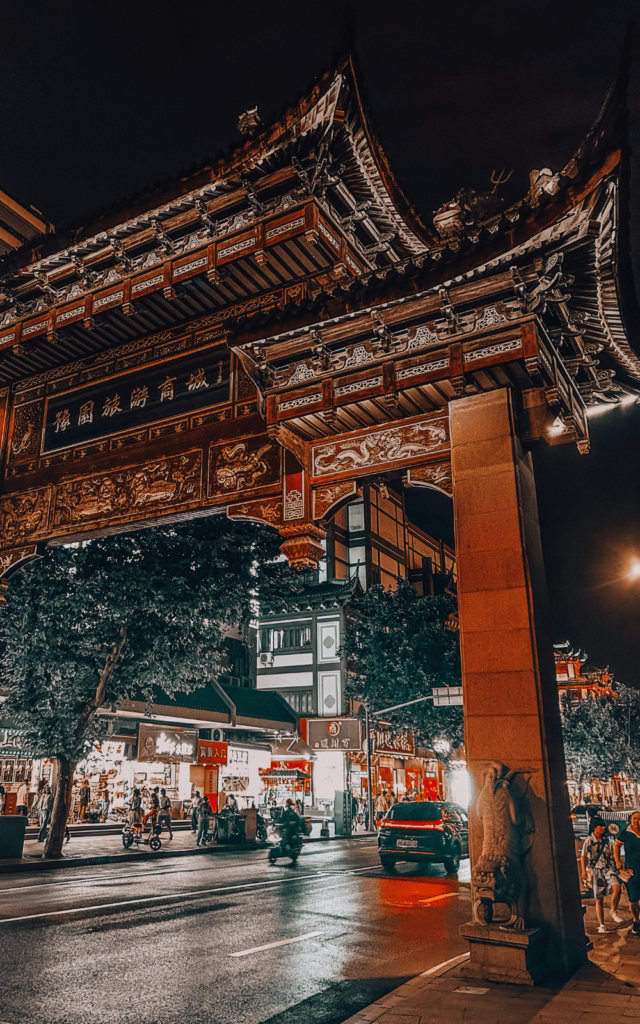
Jing’an is full of restaurants, bars, shops, and entertainment, attracting young locals and expats. It’s a great place to connect with other travelers and experience the authentic Shanghai vibe.
Huang Pu
Another great option is Huangpu, where modern Shanghai meets its charming past. Here, you’ll find sights like Laoximen, the French Concession, and People’s Square.
You can literally feel the city’s pulse from your hotel window! Just one tip: avoid staying right on Nanjing Road. It’s so lively that the traffic and noise can be a bit much, especially if you’re trying to sleep!
7. Best Hotels in Shanghai
8. Chinese Sentences To Learn Before Your Shanghai Trip
Learning a few basic Mandarin phrases will make your China trip so much better. It shows locals that you respect their culture and country, and it’s a fantastic icebreaker.
Even trying to speak one of the world’s most challenging languages can lead to unexpected invitations and unforgettable experiences.
Of course, no one expects you to be fluent, but a little effort goes a long way!
| Chinese Characters | Phonetic Transcription | English Translation |
|---|---|---|
| 你好 | nǐ hǎo | Hello |
| 谢谢 | xièxie | Thank you! |
| 多少钱 | duō shǎo qián? | How much does it cost? |
| 我听不懂 | wǒ tīng bù dǒng | I don’t understand |
| 厕所在哪里 | cèsuǒ zài nǎlǐ? | Where is the bathroom? |
| 不要,谢谢 | bù yào, xièxie | No, thank you |
| 对不起 | duìbuqǐ | Excuse me/sorry |
| 我要这个 | wǒ yào zhège | I want this one (perfect for choosing at Restaurants) |
Recommended Shanghai Travel Itinerary
Day 1: Discovering The Contrasts of Shanghai
1. Stroll from Laoximen to Xintiandi
Ⓜ️ Take subway line 10 from Yuyuan Garden Subway Station to Laoximen Subway Station in the Huangpu District. You can also take a 24-minute walk.
Two districts that couldn’t be more different are yet so close, just a block apart.
A stroll from one of Shanghai’s oldest districts, Laoximen, to one of the most modern, Xintiandi, allows you to grasp how life has transformed in Shanghai.
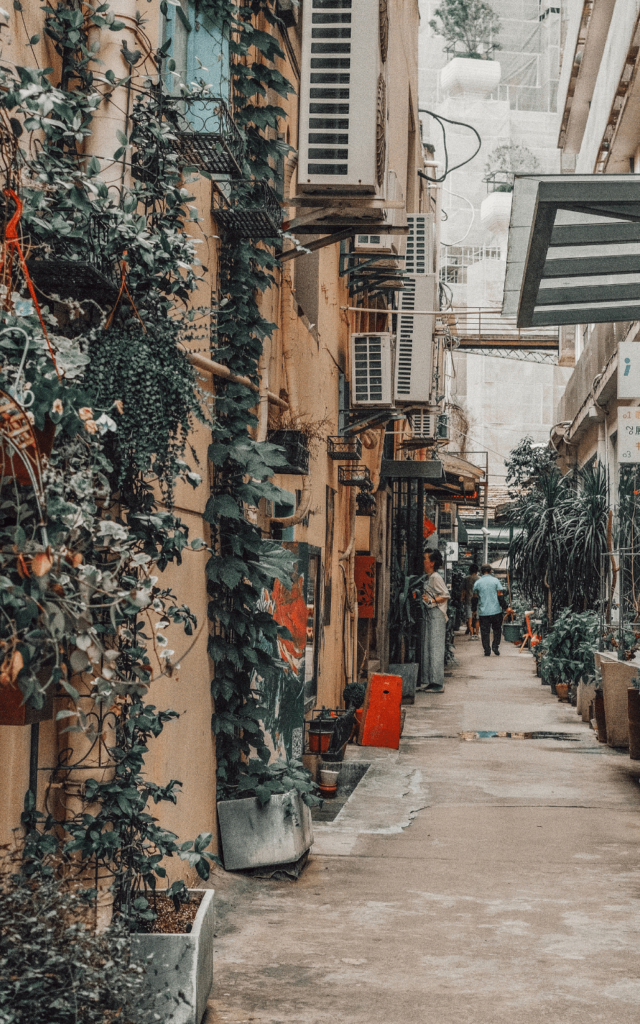
Laoximen is a raw, authentic slice of old Shanghai that, unfortunately, is undergoing modernization. Many residents were relocated in 2017 to make way for new developments.
For now, you can still wander its lanes, dotted with Shikumen-style stone buildings, and soak in the history and life experiences that have unfolded here. However, we don’t know how long this will last, so seize the moment.
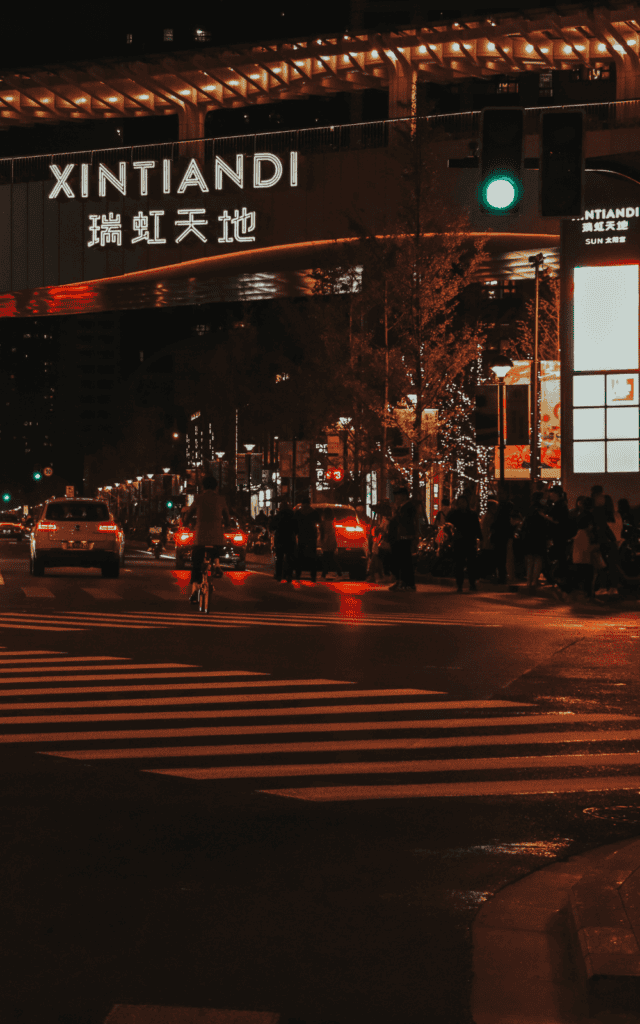
On the side, Xintiandi is one of Shanghai’s most modern and shopping-dedicated areas. The shikumen-style buildings here have been restored to host commercial activities like bars, restaurants, and upscale boutiques.
This stroll will make you aware of how the city is transforming. You can decide which side of Shanghai you prefer.
2. Yuyuan Old Street & Bazar
Ⓜ️ Take subway line 10 from Xintiandi Subway Station to Yuyuan Garden
Yuyuan Old Street is one of my favorite places in Shanghai. It’s located close to the Yuyuan Garden, and it’s just what you would expect from China: sloped-roof buildings painted in deep red, a classic Chinese-style garden with a waterway, and the smell of the best food street market in town. No wonder it is one of the tourists’ favorites.
I love visiting it at night, around 8-9 p.m. The tourist crowds have already left, and you can enjoy the area without elbowing anyone.

Many restaurants are already closed, but you can still find some gems among the surrounding street food stalls. Here, you can try delicious baozi (steamed buns), jiaozi (dumplings), and sweet candied fruit.
You will also be in this area during the day when visiting the Yuyuan Garden. That is the perfect moment to sample one of the many restaurants selling Dumplings and Xiaolongbao.
Day 2: Yu Yuan Garden, Temples, and The Bund
3. Yu Garden
Ⓜ️ From Huangpu District, it’s just a 14-minute walk to Yuyuan Garden
🏷️ Ticket Entry Price: around 40 RMB (book in advance here)
Yuyuan Garden is one of the crowd’s favorites. It’s located in the Huangpu District, right in the heart of old Shanghai.
If you haven’t yet had the chance to appreciate the beauty of a Ming-style garden, like those in Suzhou, you’ll like this one.
Try to visit on a weekday and early in the morning, as crowds can really take away from the garden’s peaceful, calming energy, which, in turn, shapes your impression of it.
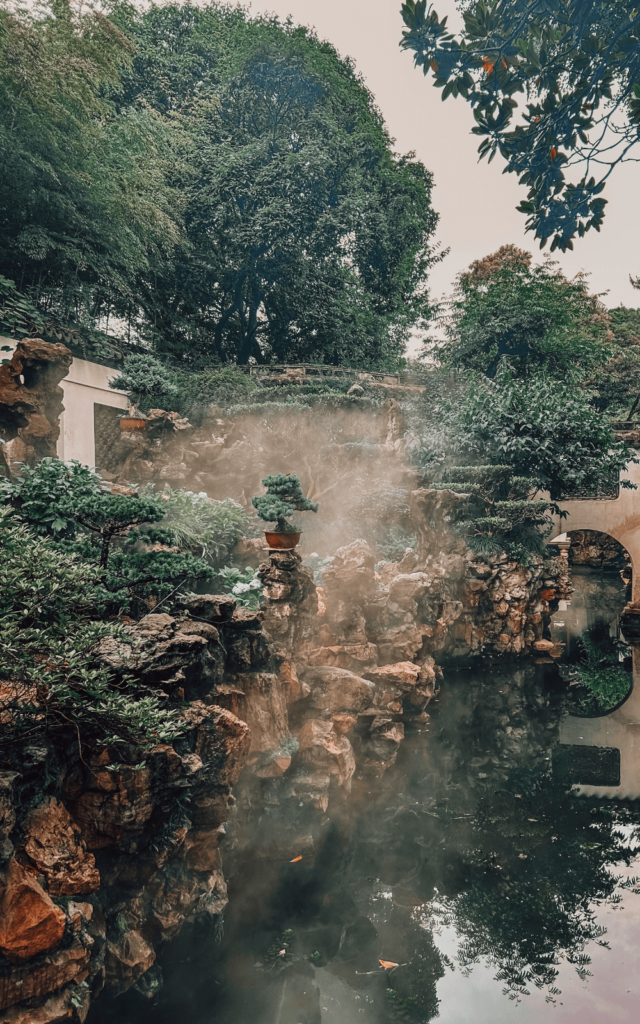
I’ve been there twice, and despite being in the same location, it felt like a completely different experience each time.
The garden includes all the elements of a classic Chinese garden. Among the typical features like the enchanting lotus pond, stone bridges, red-painted walls, and sloped roofs, the rockeries stand out for their impressive landscape design.
In particular, the Jade Rock is considered one of the most important in southern China.
4. Jade Buddha Temple
Ⓜ️ Take Line 10 to Xintiandi Station from Yuyuan Garden Subway Station. Change to line 13 and get off at Jiangning Road. It’s a 30-minute journey.
🏷️ Ticket Entry Price: 20 RMB
The Jade Buddha Temple was founded in 1882 mainly to house two jade Buddha statues imported from Myanmar by sea: a 1.95-meter-tall sitting Buddha and a smaller reclining Buddha symbolizing the Buddha’s death.
I love visiting Temples. Time seems to stop within the grounds, and the atmosphere is calm—a stark contrast to the life that never stops outside. Here, it feels like you have the time to stop and process all you’ve explored and discovered outside.
If this is your first Chinese temple, the architecture perfectly represents the typical Temple design and layout.
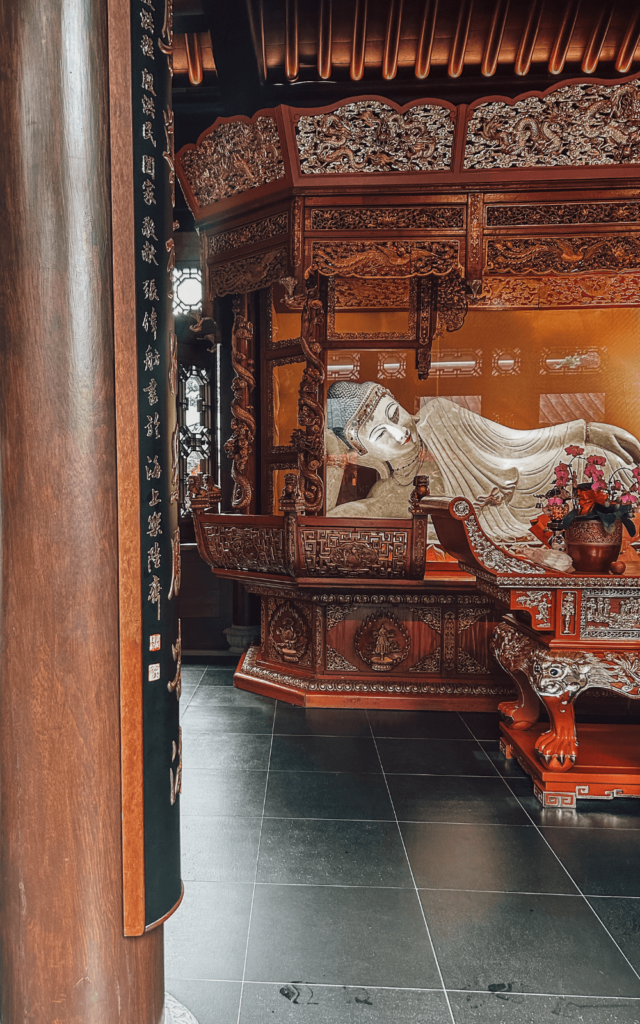
The Chamber of Four Heavenly Kings, located at the southern edge of the temple, contains statues of Maitreya, Skanda, and the Four Heavenly Kings, representing favorable circumstances.
The Grand Hall, also known as the Great Hall, contains an array of statues, including the Three Golden Buddhas.
The Jade Buddha Chamber is in the temple’s northern section, on the second floor, and requires an additional fee to visit.
5. Longhua Temple
Ⓜ️ From Jiangning Road Station, take Line 13 to Longde Road. Change to line 11 and get off at Longhua. It’s a 30-minute journey.
🏷️ Ticket Entry Price: 15 RMB
Longhua Temple, dedicated to Maitreya Buddha, is a spiritual site that embodies the architectural essence of the Song Dynasty.
As the oldest and largest temple in Shanghai, it originally featured 13 pagodas, of which one still stands today.

Although the temple is a bit farther out than the Jade Buddha Temple, it’s worth visiting if you’re staying in Shanghai.
In addition to the internal courtyard, which closely resembles the Jade Buddha Temple, the stunning golden Buddha statues in the main hall are sure to impress.
The atmosphere here is peaceful, partly because its location is less frequently visited than the temple in the city center. You might encounter a few locals in prayer, which will add to the ambiance.
6. Tianzifang
Ⓜ️ Take line 12 to Jiashan Road from Longhua Station. From there, it’s a 15-minute walk to the Tianzifang area.
On my recent trip to China, I had the chance to explore Tianzifang for the first time.
With its bohemian vibe, this artistic neighborhood is a must-visit for anyone who appreciates unique, charming, narrow alleyways.
The best time to visit is in the morning, as the streets can become quite crowded later in the day, which might detract from the experience.
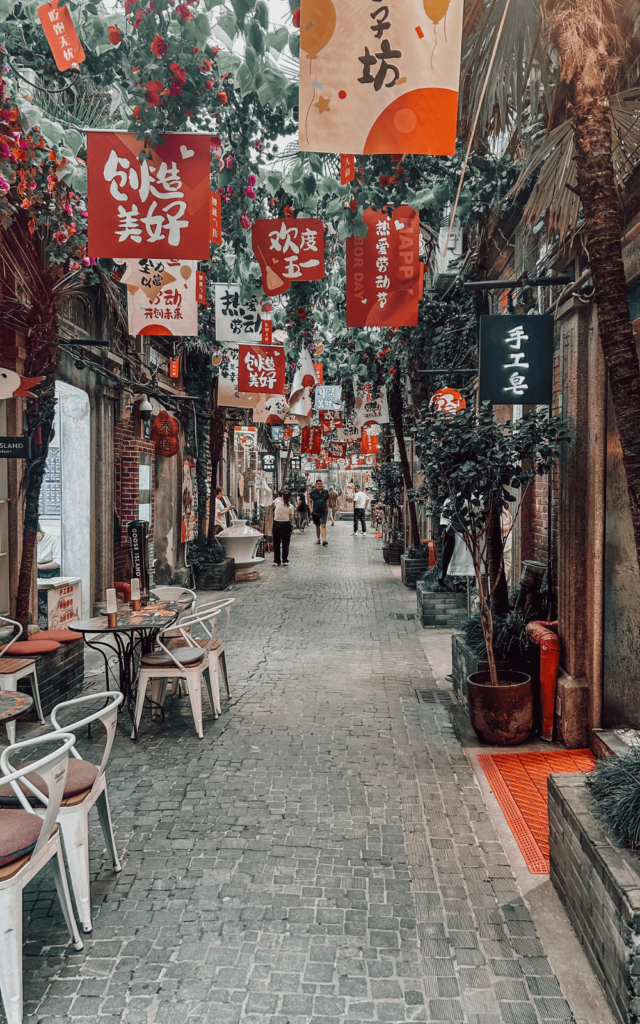
Despite its growing popularity among tourists, Tianzifang retains a strong sense of community, with families who have lived there for generations.
The local spirit is palpable as shop owners and residents chat cheerfully in front of their doors, sipping morning coffee.
The district features three main north-south lanes intersected by east-west alleys, making it easy to get lost without a map. It would be a shame to miss even one of these delightful streets.
7. Sunset River Cruise on The Huangpu River
Ⓜ️ From the Huangpu district, it’s a 12-minute walk to the Bund
Another fantastic way to experience the atmosphere of the Bund and its breathtaking skyline is to book a river cruise.
The ideal time to embark is at sunset when the city’s dazzling lights begin to illuminate the view. The cruise lasts about 45 minutes and offers unobstructed views of both riverbanks.
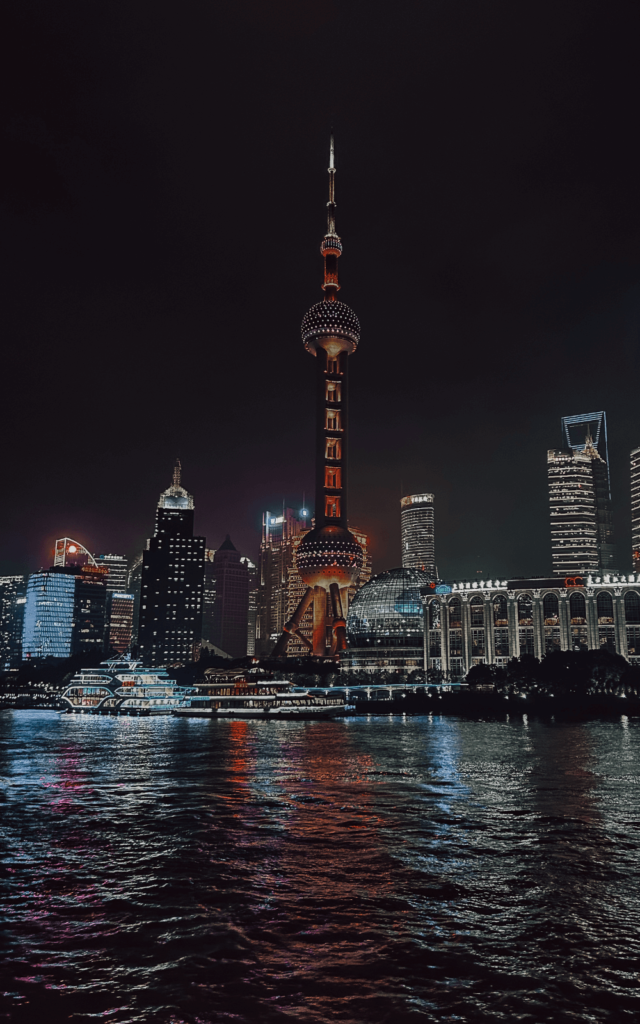
After a long day of exploring, it’s the perfect way to wrap up before dinner.
I experienced this for the first time in 2024, and it was indeed one of the most unforgettable moments of my time in Shanghai.
The cruise allows you to fully appreciate the scenery without the crowds of the Bund. It’s one of those rare moments when you can pause, take in your surroundings, and realize how vibrant and alive Shanghai is—and you’re right in the heart of it all.
Day 3: ZhuJiaJiao Water town, Marriage Market & Shanghai Views
8. Zhujiajiao
Ⓜ️ Take Line 10 to Shanghai Hongqiao Train Station from Yuyuan Garden Station. Change to line 17 and get off at Zhujiajiao. It will take 1 hour and 15 minutes.
🏷️ Free entry ticket for the majority of the site. To visit the entire site, you will need to pay for a ticket.
After two days in Shanghai, you’ll likely be ready for a break from its towering skyscrapers and constant energy. It’s time for a day trip to a nearby water town: Zhujiajiao. If you’ve never been to Suzhou, this will feel like a completely different side of China.
Located about 50 km from downtown Shanghai, Zhujiajiao shows you a completely different side of the city. Here, life moves slowly, much like the waterways that wind through its narrow alleys.
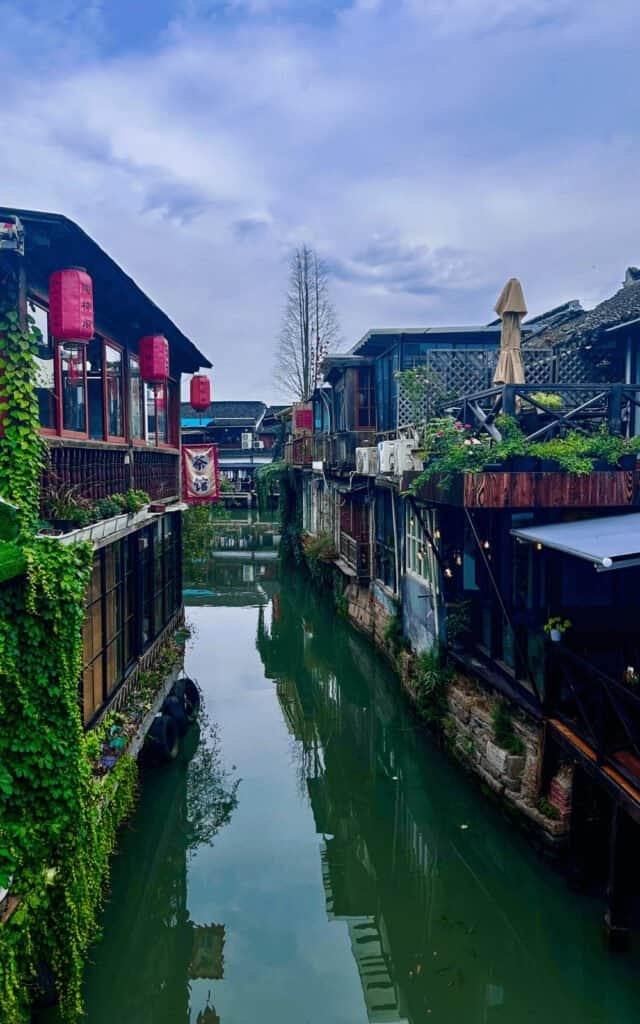
In Zhujiajiao, you’ll find people sitting outside in the sun, with windows and doors open, inviting you to observe the simplicity of their daily lives.
Although the town is accustomed to tourists, it retains its authentic charm. You can explore the nine main streets, including Beidajie, the most well-preserved and popular with visitors for its various restaurants.
I highly recommend navigating with a map, as getting lost and missing key sights is easy. Zhujiajiao is the perfect day trip from Shanghai. Discover how to plan your trip to Zhujiajiao here.
9. People’s Park & Marriage Market
Ⓜ️ Take line 17 to Hongqiao Train Station from Zhujiajiao. Change to Line 2 and get off at People’s Square. It will take 1 hour and 15 minutes.
The marriage market held in People’s Park is one of the most intriguing experiences in Shanghai. Although it might seem like an old-fashioned practice from a Western perspective, it remains highly valued in China.
Here, parents and grandparents “advertise” their children and grandchildren with posters that display personal information and highlights to attract potential partners.
The interesting part is that the children themselves aren’t present—only their parents are, engaging in discussions and negotiations.
These relatives typically highlight details like age, zodiac sign, and financial status, while hobbies or lifestyle preferences are rarely mentioned. The park is busiest on the weekends from 11 am to 16 pm.
10. Climb to the Top of the Shanghai Tower
Another way to experience Shanghai is by visiting the top of one of its iconic skyscrapers.
While there are several options, the spiral-shaped Shanghai Tower is the best choice. At 632 meters, it is the tallest building in Shanghai and the third in the world.
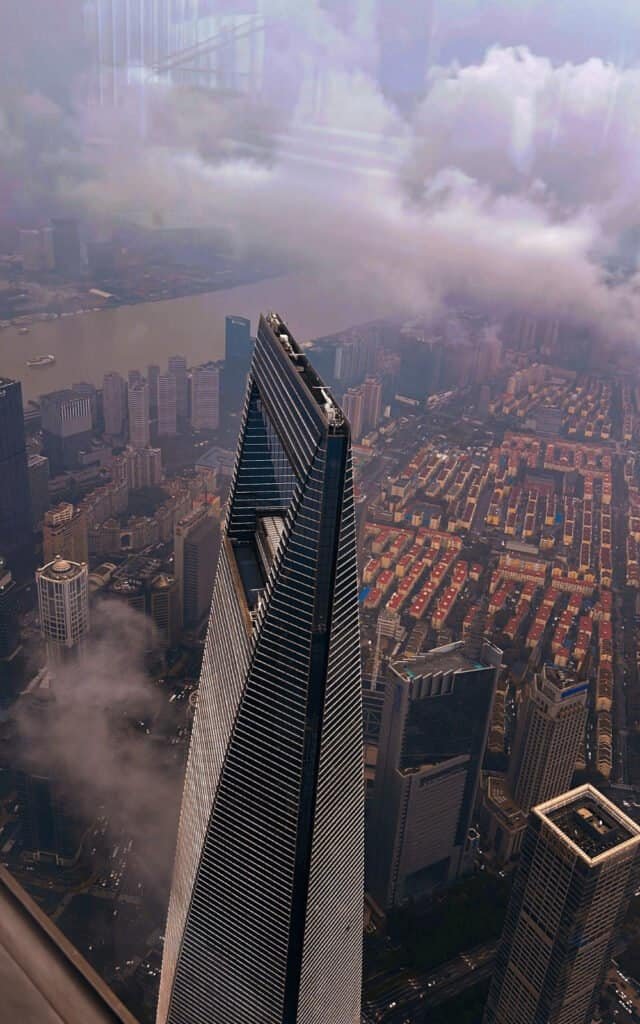
It features the world’s highest sky deck, accessible via the fastest elevator. From the top, you can enjoy breathtaking views of the Jinmao Tower, the Shanghai World Financial Center, and the iconic Pearl Tower.
The ticket price is relatively high by Chinese standards, so if you decide to go up, ensure the weather is nice so you can get a clear view of Shanghai below you.
Where to Go After Shanghai?
Shanghai makes for the perfect place to land in China, especially if that’s your first time. It’s a very modern city where, in 2025, most locals are accustomed to foreign travelers. Let’s say that the culture shock is less critical than in other cities.
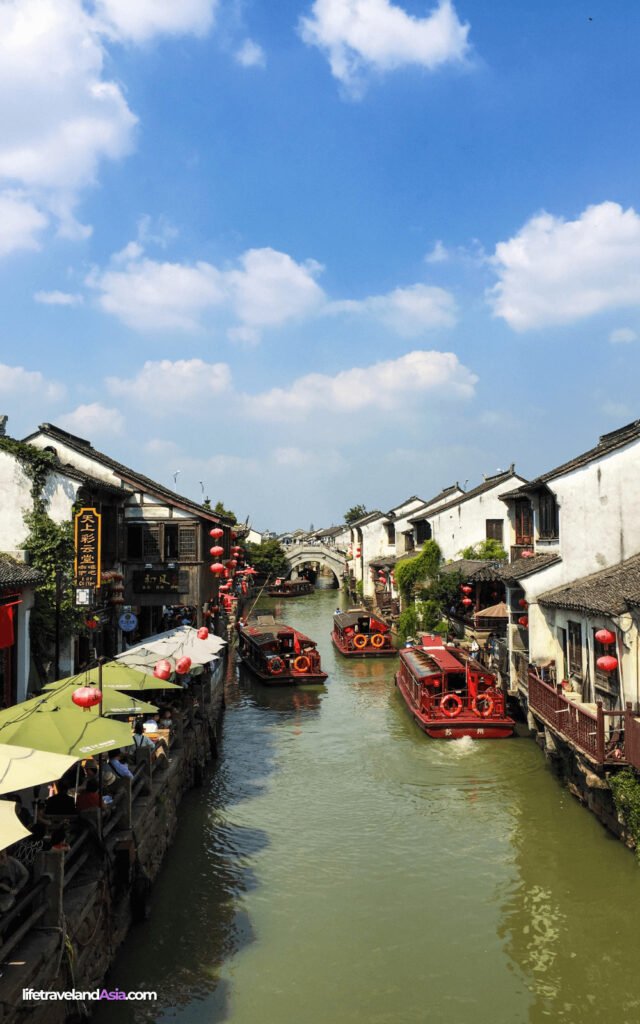
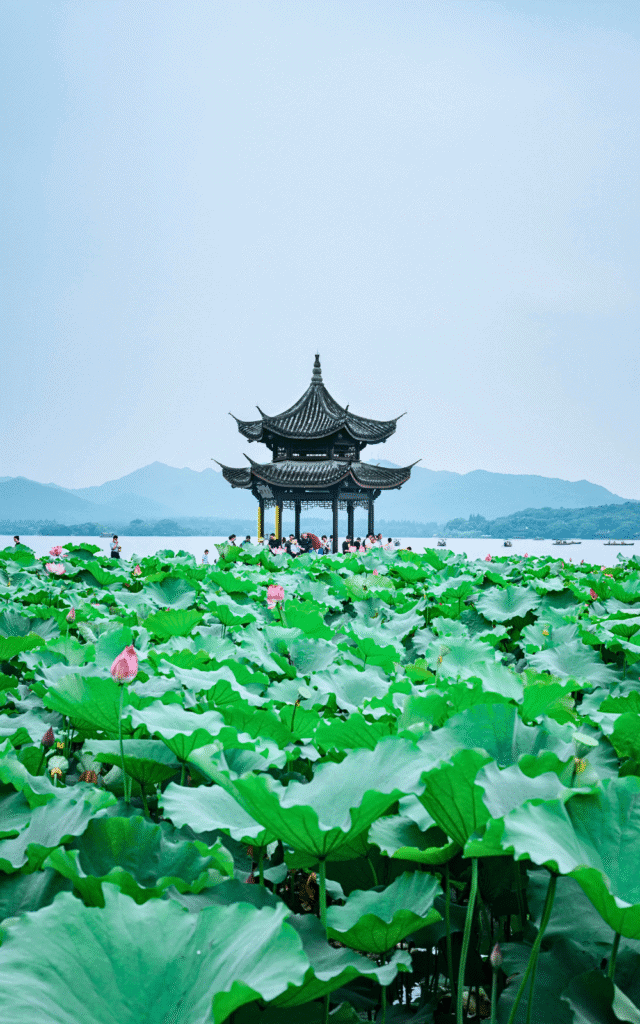
After your Shanghai trip, you have so many options to choose from. If you’re planning to stay in China for about a week, you can consider heading to Suzhou for a couple of days or just for a day trip from Shanghai.
Besides Suzhou, you could think about heading to Hangzhou or Nanjing. They’re so close to Shanghai, yet so different in energy and atmosphere.
And there you have it! Hopefully, this Shanghai travel guide helps you plan your trip effectively.
Shanghai is one of those cities in China you absolutely can’t miss, and a 3-day itinerary is ideal for discovering the best things to do without feeling rushed.
If you’re still planning your trip to China and looking for the last piece of information, make sure to check out my China travel guide. It collects all the wisdom gained over years of living and traveling across China.
If you have doubts, you can also drop your questions in the comments below. I’m happy to help!
Did you find it helpful? 📌 Save it on Pinterest!


